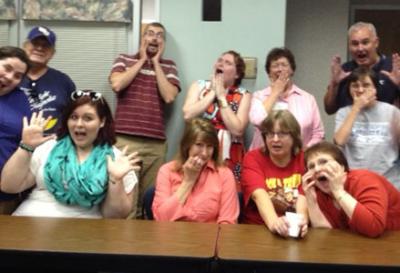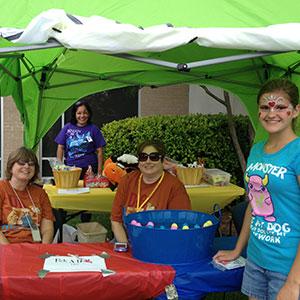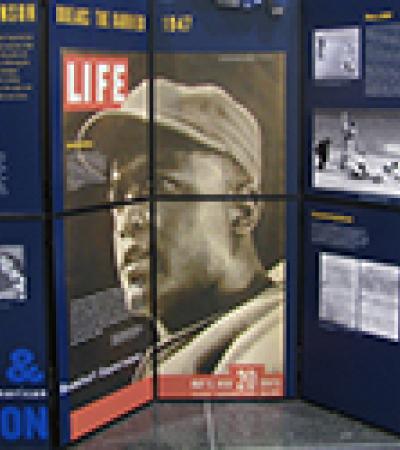The Beauregard Parish Public Library, located in southwestern Louisiana, has undergone dramatic physical and procedural changes during the last three years. We have relocated a branch, changed the interior of our main branch, and altered some of our major annual events. During this time, I have observed the way that public library staff members interact with and inform patrons about upcoming events and changes. The role that staff members (particularly those beyond the administrative circle and programming department) play in the development and implementation of programs is crucial to presenting the library as an integral part of the larger community. Read on to find out some of the simple truths guiding the way I am changing my library’s promotion strategy based upon my observations of staff-patron interactions.

Facing the Transition to an Online Summer Reading System Head-on
Patron perceptions of the library, particularly in times of dramatic change, are greatly impacted by the staff members’ demeanor and behavior regarding the changes. The circulation and reference staff members’ daily interactions with patrons make indelible impressions regarding everything from new furniture to changes in library policy.
In 2011, I put my full faith in the power of staff enthusiasm with the implementation of a fully online summer reading logging system. Our library converted to the Evanced system, but we offered in-house registration options as the standard while we made the transition. Several staff members were resistant to the heavy reliance upon technology and other changes brought by a strictly online system. Therefore, the months prior to summer 2011 were spent learning how the product worked for our library system and what training and access changes needed to be made. Prior to summer, staff members were given specially allocated times to explore the system and were encouraged to “try to break something.” Once summer reading began, staff members could rely on the paper forms and then transfer information if that made them more comfortable. While this was not as expeditious, it did provide a smoother transition for long-time staff members who were hesitant to use the new system. It was a gradual change, with emphasis upon learning and growth rather than perfection and speed. Summer 2012 was a comparatively easy continuation of the previous summer’s procedures. Staff members realized the benefits of the new system and expressed their pleasure at the ease of the processes. We saw growth in the number of participants as well as number of attendees at related programming.
During summer 2013, staff members took part in a friendly competition where business cards with summer reading program dates were distributed by each staff member. The cards were color coded and four teams were formed. Patrons were able to indicate the color of their card when they registered. At the end of the summer, the winning team received special recognition. This fostered staff ownership of the program as well as friendly competition. The fruits of this endeavor were a 25 percent increase in total hours logged by patrons and a dramatic improvement in staff opinion of the logging program.
Shine Your Light: Showcasing Staff Members’ Hidden Talents
As part of the staff-involvement initiative, I also implemented programs that encouraged nontraditional interaction between staff members and patrons. During December 2012, patrons were invited to attend a series of programs hosted by library staff members. These programs centered on “hidden talents” staff members did not typically showcase in their normal purview at our library.
The events ranged from calligraphy lessons to a musical ensemble. These events were popular and resulted in frequent repeat requests from patrons, particularly for the musical ensemble. Our library plans on making this programming series, titled “From: Us, To: You,” an annual event. Encouraging alternative interaction such as these between staff and patrons personalizes the experience for both. By allowing staff members opportunities to share their expertise, a programming librarian can create appealing programs that reflect the community aspects of a public library. These programs also showcase the individualism of staff members, making them more relatable and approachable to patrons.

Recognition Builds Job Satisfaction
Recognition and celebration of goal completion is another important facet of the programming librarian’s staff involvement plan. Recognition and celebration do not have to be expensive or time-consuming. Leaving positive notes regarding staff members’ promotion of the library/library events, publicly or privately congratulating staff for improvement in quantifiable stats, and developing friendly promotion competitions are all effective ways of encouraging staff members and making promoting your library an appealing prospect. Remember to keep acknowledgment timely and specific to properly communicate the value of the individual or group’s input.
Changes focusing upon general staff participation and contributions are implementable by libraries of various sizes. For most libraries, creating a competitive spirit between departments during yearly events such as National Library Week or Teen Tech Week encourages enthusiasm and participation. Celebrating and recognizing the individuals as well as departments within the library increases job satisfaction and builds a sense of ownership for the products of that staff member’s duties. Rewarding staff members for development of skills outside of their normal purview also works well within libraries of all sizes and situations. Whether allotments for education and training can fit into your budget, and how to best assist the largest number of staff members, are questions that directors and programming coordinators will be rewarded for answering. Even if formal training is not possible, encouraging research on topics of professional interest can assist staff with staying at the forefront of library trends, helping them build confidence and a reputation of excellence within the community.
You Can Get Your Staff Invested
You can ensure that your library staff is properly informed and feels invested in events. Library staff involvement can range from detail-awareness to conducting specialty programs. A few tips:
• Encourage participation in programs and work with administration to offer rewards that suit your library’s budget and staff interests.
• Provide ample time and opportunity for staff members to explore changes prior to their introduction to the public.
• Verify that staff members identify with the library’s goal.
Our libraries are reflections of the community. Staff members are the most immediate sampling of the community, so establishing their investment in and connection to library events should be your first step in building successful library promotion initiatives. Good luck getting personal!


